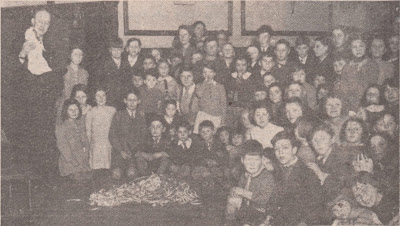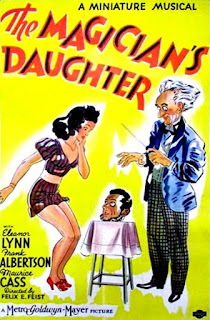Evacuees: memories of magic
Operation Pied Piper, launched in September 1939, was the biggest and most concentrated mass movement of people in Britain’s history.
After the fears of bombing weren’t realised, many of the evacuees were returned home, until France fell to Germany in 1940, and bombing campaigns started with a vengeance in Britain. The evacuation plan started again. Some children returned home in the summer of 1941, after the Battle of Britain was won. When V1 rockets began falling on London in June 1944, the evacuee programme kicked in for a third time.
Entertaining evacuees
Magicians were in high demand to entertain and reassure evacuees as they arrived in village halls and schools around the country, ready to be allocated to their temporary guardians.
In Moira, a small mining village in Leicestershire, Doreen Tudor remembered the welcoming reception. It featured a magician who produced doves from his top hat which flew around the room. Such was the impression this created for the six-year-old girl, that she recalled the experience sixty-six years later when contributing to the BBC’s World War Two People’s War archive.
Edmund Southey also contributed to the BBC’s archive. Aged eight, he was evacuated from Dover to Ynysddu in South Wales: “I remember getting off the train at 3am after a twelve-hour train journey – but I had no idea where I was. We went into a church hall [and] there was an amateur magician doing tricks for us. My friend was poking fun at him. A lady called Mrs Rees had been told to come by her husband and collect “two cheeky little buggers as they won’t cry to go home”. So, she spotted us two larking about with the magician and decided to take us home!”.

Another evacuee, from The Channel Islands (which were occupied by the Germans), was Gordon Price. He remembers being approached by a magician before an evacuee show started. The performer asked Gordon and a friend if they would volunteer to come on stage during the act and pretend to receive an electric shock from the seat of a chair when the magician gave a secret signal. But, when the time came and the magician asked for two "volunteers", the stage was invaded by 50 eager school children anxious to help out. "It took quite some time before the magician found us," said Price after the war.
Herbert Milton, who’d performed some of his first magic shows in the trenches during World War One, later served in the Royal Flying Corps and used card tricks to pay off his bar bills in the mess. Two decades and several royal command performances to his later, professional magician Milton performed for over 1,500 evacuees at a party given bythe Mayor and Mayoress of Guildford on 3 December 1939.
The quality of magicians entertaining evacuees varied. David Bernstein, evacuated to Bedford, remembered a magician doing a trick where he produced items from a top hat. “The magician said, ‘Pick whatever you like. You just shout something out and I’ll take it out of here.’ We yelled out words like sweets and chocolate, marbles, whatever, and he said, ‘Did anybody say, petrol coupons?’ and pulled out a pack of coupons”. The trick, while topical, was probably meant for an adult audience. By their disappointed reaction, the magician quickly learned the lesson of ‘knowing your audience’.
Confused and unhappy, the evacuated children were cheered up by magicians as they arrived in their new homes and throughout their enforced stays.
Michael Talbot, a young evacuee living temporarily in Surrey, recalled nearby Canadian troops looking after him and his school mates. “They would come and collect us in coaches, sit us down to a good meal, give us a film show, followed by a bit of live entertainment like a magician, returning us before bedtime before bedtime”.
“The Indian troops would put on a show in the local cinema on a Saturday night, when there would be signers, magicians and acrobats”, remembered Iain Macpherson, who was evacuated to from London to the coastal holiday resort of Nairn in northern Scotland.
Many magicians offered discounted rates when performing for evacuees.
Taking in refugees
Magicians outside of England’s major cities played another part in keeping British children safe from German attack. Like many other people in rural parts of the country, they took refugees into their homes and cared for them while their parents stayed in their city homes.
Doris Julia Hunter was eight-and-a-half years old when she was evacuated with her sister from Birmingham to Ellistown in Leicestershire. On arriving by train and bus at Ellistown school, they were chosen as a pair to live with Mr and Mrs Hemsley. As the girls arrived at the Hemsley’s house and walked into the living room where Mr Hemsley was standing with his back to the fire, they were anxious and scared. He approached them and placed his hands behind their heads, producing a coin in each from behind their ears. It turned out that the master of the house was a magician. This broke the ice and the girls felt very welcome. Doris remembered that “Mr and Mrs Hemsley were a wonderful couple who looked after us really well and set us many good values which took us forward through life”.
Another magic-related person to take in evacuees was Harry Jones. Jones was famed for his unique World War One escape from Yozgad in Turkey with Cedric Hill (an amateur magician) in which they used stealth, séances and telepathy to manipulate and control the minds of their Turkish captors. Their story was immortalised in Jones’ book The Road to En-dor and Hill’s The Spook and the Commandant. Despite his age and ill-health, Jones took in four evacuee children at his home in Bangor, North Wales.
Mary Middleton's father worked in a reserved occupation in an engineering factory by day, but was also a magician and a member of the Nottingham Guild of Magicians. The family were another one to take in evacuees:
“My parents thought if we had a girl about my age she would be company for me. Mum took me down to the village school in the dark and wet. We waited about for what seemed a long time. There were no children on their own in this batch. They were all mothers and young children who were leaving the greater London area because of the doodlebugs. We ended up with Janet, her mother and Margaret who was about a year old. Their father came for weekends. I think they stayed about a year”.
Evacuee tricks
With evacuees a major feature of wartime society, magic dealers developed tricks themed around the evacuee experience. Magic maker Jack Hughes built the ‘Evacuee Doll’ (invented by Jimmy Flowers). In the trick, a 10” high wooden cut-out ‘evacuee’ leaves her small London home (a small painted wooden house), appears in a country home (a larger wooden board), then vanishes and reappears where she began from, back in her London home. The trick mimicked the movement of evacuee children from the cities to the country, and back again.
The stories above are mostly extracted from the B.B.C. WW2 People's War archive. If you know of any evacuee stories related to magic, please comment below and share your memories.








Comments
Post a Comment